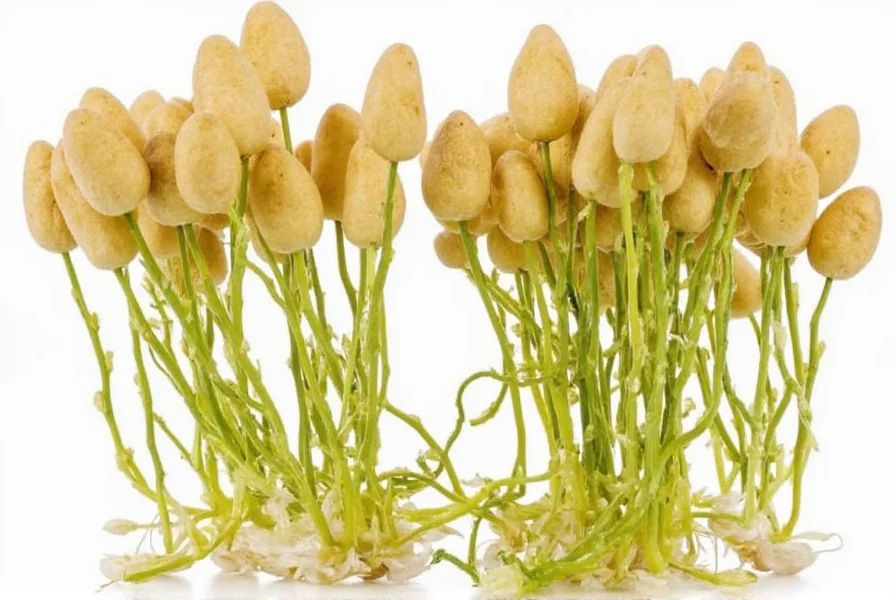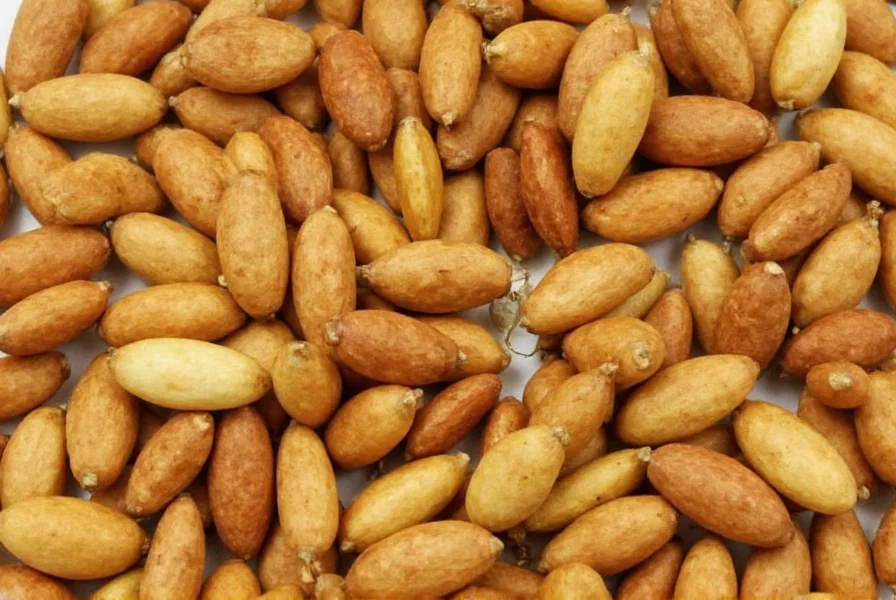Understanding wild ginger seeds begins with recognizing they belong to a completely different plant family than the ginger used in cooking. While Zingiber officinale produces the familiar culinary ginger root, wild ginger (Asarum canadense and related species) is a native woodland plant with unique propagation requirements and characteristics that gardeners and foragers should understand.
Botanical Profile of Wild Ginger
Wild ginger (Asarum canadense) is a perennial herb native to eastern North American forests. This low-growing plant features heart-shaped leaves and distinctive maroon flowers that bloom close to the ground in early spring. The plant spreads primarily through underground rhizomes, forming dense colonies in suitable woodland environments. The seeds develop in a fleshy capsule that splits open when mature, revealing small, shiny black seeds with an attached elaiosome—a nutrient-rich appendage that attracts ants for seed dispersal.

Identifying Wild Ginger Seeds
Wild ginger seeds are small (approximately 2-3mm), oval-shaped, and dark brown to black when mature. Each seed has a distinctive fatty appendage called an elaiosome that serves as an ant attractant. This evolutionary adaptation ensures the seeds get carried to nutrient-rich ant nests where they can germinate. The seeds develop in a fleshy, green capsule that turns brown and splits open in late summer or early fall when the seeds are ready for collection.
Wild Ginger Seed Germination Process
Successfully growing wild ginger from seeds requires understanding their complex dormancy requirements. Unlike many garden plants, wild ginger seeds exhibit double dormancy, meaning they need two distinct temperature cycles to germinate properly:
| Germination Stage | Temperature Requirement | Duration | What Happens |
|---|---|---|---|
| Cold Stratification | 33-40°F (1-4°C) | 60-90 days | Breaks physiological dormancy |
| Warm Stratification | 68-86°F (20-30°C) | 60-90 days | Root development begins |
| Second Cold Stratification | 33-40°F (1-4°C) | 60-90 days | Shoot development initiates |
This double dormancy mechanism ensures seeds only germinate when conditions are ideal—typically in the second spring after seed production. Gardeners attempting to grow wild ginger from seeds should mimic these natural temperature cycles by either planting seeds outdoors in fall or using controlled stratification methods indoors.
Step-by-Step Guide to Growing Wild Ginger from Seeds
For those interested in propagating wild ginger from seeds, follow these evidence-based steps:
- Seed Collection: Harvest seed capsules in late summer when they begin to split open but before seeds disperse. Look for brown capsules that feel slightly soft.
- Seed Preparation: Remove seeds from capsules and gently rinse off any pulp. Do not let seeds dry out completely.
- Natural Stratification Method: Sow seeds immediately in a shaded garden bed with rich, moist soil. Cover with 1/4 inch of soil and mulch. Seeds will experience natural temperature fluctuations over two seasons.
- Controlled Stratification Method: For indoor propagation, place seeds in moist sand or vermiculite in a sealed container. Refrigerate for 60-90 days, then move to room temperature for 60-90 days, then back to refrigeration for another 60-90 days before planting.
- Planting: After stratification cycles, plant seeds 1/4 inch deep in well-draining, humus-rich soil with high organic matter content.
- Care: Maintain consistent moisture and provide dappled shade. Seedlings emerge slowly and may take 18-24 months to develop visible above-ground growth.
Wild Ginger vs. Culinary Ginger: Critical Differences
Many gardeners confuse wild ginger with the culinary ginger used in cooking, but these plants belong to different botanical families with significant differences:
- Botanical Family: Wild ginger (Asarum) belongs to Aristolochiaceae family, while culinary ginger (Zingiber officinale) is in Zingiberaceae family
- Edibility: Culinary ginger rhizomes are safe for consumption, but wild ginger contains aristolochic acids which are potentially toxic and carcinogenic
- Propagation: Culinary ginger is typically grown from rhizome divisions, while wild ginger can be grown from both rhizomes and seeds (though seed propagation is challenging)
- Growth Habit: Wild ginger forms low ground cover in woodland settings, while culinary ginger grows as upright tropical plants
- Cold Hardiness: Wild ginger is cold-hardy to USDA zone 3, while culinary ginger requires tropical conditions or indoor growing in temperate climates
Ecological Importance of Wild Ginger
Wild ginger plays a crucial role in native woodland ecosystems. Its dense foliage provides excellent ground cover that prevents soil erosion on forest slopes. The plant serves as a host for the pipevine swallowtail butterfly in some regions and provides early spring nectar for pollinators. The unique seed dispersal mechanism involving ants (myrmecochory) demonstrates sophisticated ecological relationships that have evolved over millennia.
Common Challenges in Wild Ginger Seed Propagation
Gardeners attempting to grow wild ginger from seeds often encounter these challenges:
- Low germination rates: Even with proper stratification, germination rates typically range from 20-40% due to natural seed viability limitations
- Slow establishment: Seed-grown plants take 2-3 years to develop substantial colonies compared to rhizome divisions which establish more quickly
- Moisture sensitivity: Seeds and seedlings require consistently moist but not waterlogged conditions
- Light requirements: Too much direct sun scorches seedlings, while insufficient light slows growth
- Predation: Squirrels, chipmunks, and other small animals may dig up planted seeds
Sustainable Wild Ginger Cultivation Practices
For those interested in incorporating wild ginger into native plant gardens, consider these sustainable practices:
- Obtain seeds from reputable native plant nurseries rather than wild harvesting to protect natural populations
- Use organic mulch to maintain soil moisture and temperature consistency
- Pair with compatible native woodland plants like trillium, bloodroot, and ferns
- Avoid chemical fertilizers which can disrupt the delicate mycorrhizal relationships wild ginger depends on
- Practice patience—wild ginger establishes slowly but forms beautiful, long-lasting ground cover
Conclusion
Wild ginger seeds represent a fascinating example of plant adaptation to woodland environments, with complex germination requirements that ensure survival in natural settings. While challenging to propagate from seed, understanding the specific needs of Asarum canadense seeds allows gardeners to successfully incorporate this beautiful native plant into woodland gardens. Remember that wild ginger differs significantly from culinary ginger in both botany and safety, making proper identification essential. For most gardeners, starting with established plants or rhizome divisions provides more immediate results than seed propagation, but those willing to work with the natural germination cycles can enjoy the satisfaction of growing wild ginger from seed.
Frequently Asked Questions
Can you eat wild ginger seeds?
No, wild ginger seeds should not be consumed. They contain aristolochic acids, which are potentially toxic compounds that can cause kidney damage and are classified as carcinogens. Unlike culinary ginger (Zingiber officinale), no part of wild ginger (Asarum species) is considered safe for regular consumption.
How long do wild ginger seeds remain viable?
Wild ginger seeds have relatively short viability compared to many other plant seeds. When stored properly (moist and refrigerated), they maintain reasonable germination rates for 6-12 months. However, seeds lose viability quickly when allowed to dry out completely. For best results, sow wild ginger seeds immediately after collection or store them in moist medium in the refrigerator.
Why is my wild ginger not producing seeds?
Wild ginger requires specific conditions to produce seeds. The plant must be mature (typically 3+ years old), growing in appropriate woodland conditions with dappled shade, and have access to pollinators. Many wild ginger plants grown in gardens fail to set seed because they lack the specific pollinators (often small flies or beetles) that visit the ground-level flowers in natural settings. Additionally, wild ginger is often grown as a single clone, and cross-pollination between genetically distinct plants increases seed production.
Can I grow wild ginger from store-bought ginger?
No, you cannot grow wild ginger (Asarum canadense) from store-bought ginger. Commercial ginger root sold in grocery stores is Zingiber officinale, a completely different plant from a different botanical family. While you can grow culinary ginger from store-bought rhizomes, this will not produce wild ginger. Wild ginger requires specific native seeds or rhizome divisions from established Asarum plants.
What are the best companion plants for wild ginger?
Wild ginger thrives alongside other native woodland plants that share similar growing requirements. Excellent companion plants include trilliums, bloodroot (Sanguinaria canadensis), ferns (especially Christmas fern and maidenhair fern), hepatica, and native violets. These plants create a naturalistic woodland garden that supports biodiversity while providing varying textures and seasonal interest throughout the growing season.











 浙公网安备
33010002000092号
浙公网安备
33010002000092号 浙B2-20120091-4
浙B2-20120091-4